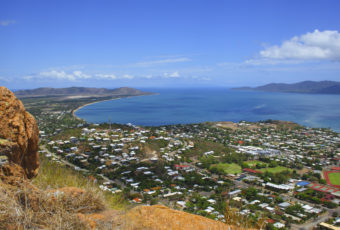Monash high-tech lab opens up the senses
A new-concept hub designed to tackle the research challenges of the internet age will open at Monash University today.
Connecting information technology and engineering to creative and business expertise, sensiLab will hothouse researchers from the faculties of Information Technology, Engineering, Art, Design & Architecture (MADA) and the Monash Business School.

The Hon Adem Somyurek, Victorian State Minister for Small Business, Innovation and Trade will open the new lab based at the university’s Caulfield campus.
Director of sensiLab Professor Jon McCormack said seniLab welcomed researchers from any discipline to initiate disruptive change, rather than simply react to it.
“The immediate, connected and open nature of the internet means that ideas propagate more quickly and more broadly than ever before,” Professor McCormack said.
“New knowledge is being generated faster than any time in human history. Universities must acknowledge that many traditional avenues of research have been bypassed by technology and the accelerated cultural change that it drives.”
From media to manufacturing, disruptive technology continues to challenge long-established businesses and institutions, even the nature of work itself.
“Australia must embrace these changes by adapting its research culture over the next decade,” Professor McCormack said.
“It’s here that sensiLab aims to drive creativity and innovation in IT by connecting designers, artists, engineers, computing experts and business entrepreneurs to create the technological breakthroughs necessary for a successful economy.”
Packed with all kinds of new technologies from humanoid robots to 3D printers, sensiLab’s concept is based on creative innovation through knowledge sharing, exemplified by emerging innovation spaces such as hacklabs and makerspaces.
The lab’s focus is the intersection of new developments in visualisation, interaction and digital fabrication and its name refers to the idea of engaging all the senses.
“We want to bring a sense of empathy and play to the design and application of technology to build really engaging experiences,” Professor McCormack said.
“With sensiLab we have the ability to rapidly prototype the technology of the future, from wearables, Internet of Things and machine-to-machine technologies to new virtual reality systems and haptic devices.”
The opening will also showcase collaborative projects from another Monash Faculty of Information Technology initiative, Immersive Analytics. This explores how next-generation interaction and display technologies available at sensiLab as well as the large CAVE2 immersive visualisation environment and other visualisation and interaction technique located at the university’s Clayton campus can be used to support analytical reasoning and decision-making. The aim is to provide truly multi-sensory interfaces that support collaboration and allow users to immerse themselves in their data and designs.
sensiLab will build productive connections between researchers across disciplines and will also seek to engage Monash University’s best research students—the next generation of research entrepreneurs. With its ability to work beyond traditional boundaries and conventional methodologies, the lab will become an attractive investment for industry and business looking to bring creativity and technological innovation to their business.
Some of the projects on display at the lab’s opening include
- a new haptic ring that allows blind and vision-impaired people to feel graphics and diagrams on mobile devices such as phones and tablets;
- ‘ContextUWall,’ a collaborative interactive display system that connects touch tables, tablets and high resolution display systems such as Monash’s CAVE2 environment to allow researchers to collaboratively explore complex data;
- interactive virtual reality displays that recreate the ancient metropolis of Angkor Wat in Cambodia;
- audio-enhanced 3D maps that allow people with a vision impairment to navigate in public spaces;
- simple haptic techniques for low-cost virtual reality such as the Oculus Rift that add to the sense of presence by mirroring physical and virtual objects in space;
- an interactive sandpit that brings a new virtual dimension to playing with sand.
sensiLab will be launched today, Wednesday, May 13 on Level 6, Building H at Monash University’s Caulfield campus.
*


































Ask A Question
Ask us about your program of interest, or if you have a question about our services.
CONTACT US TODAY